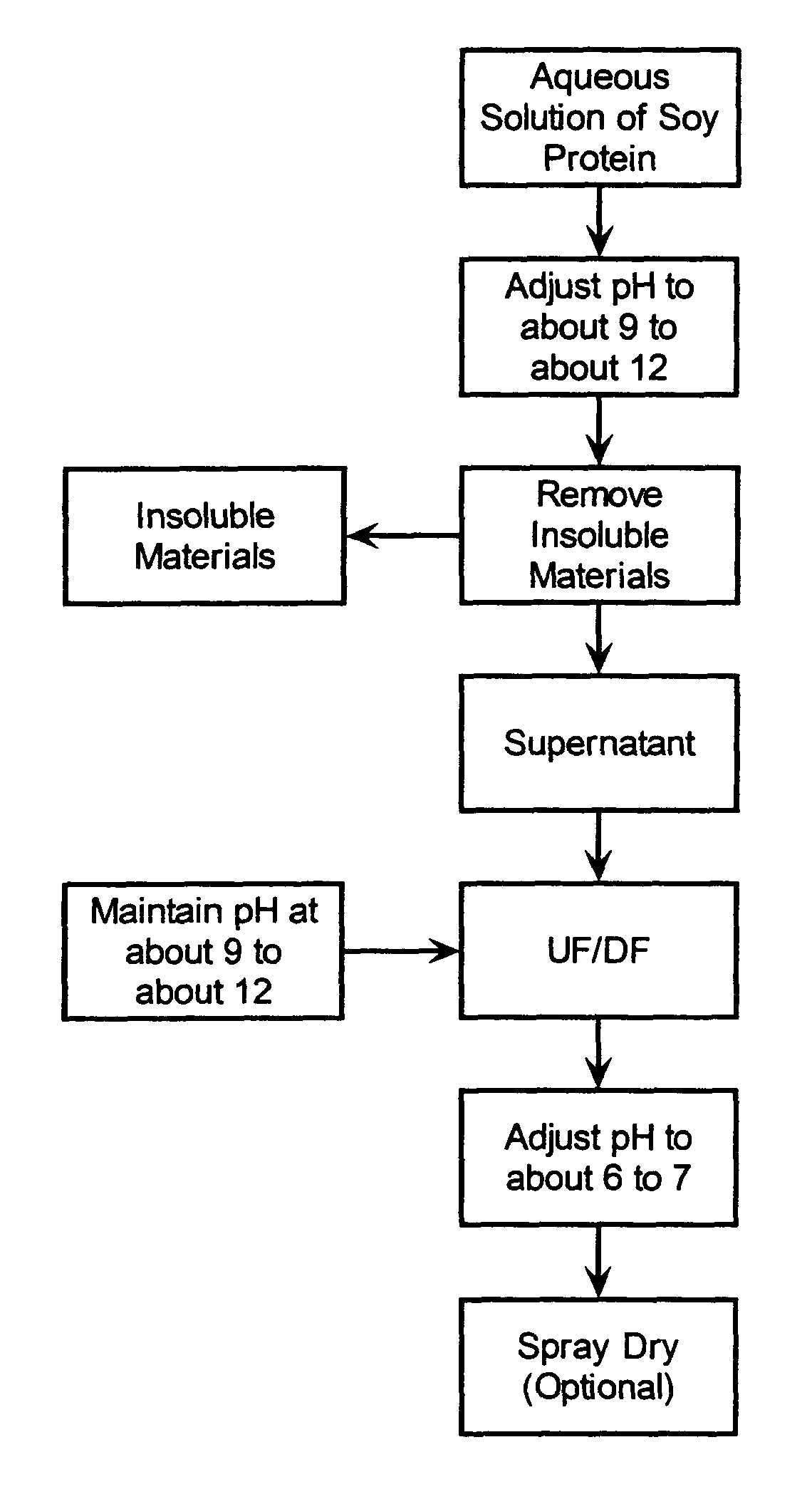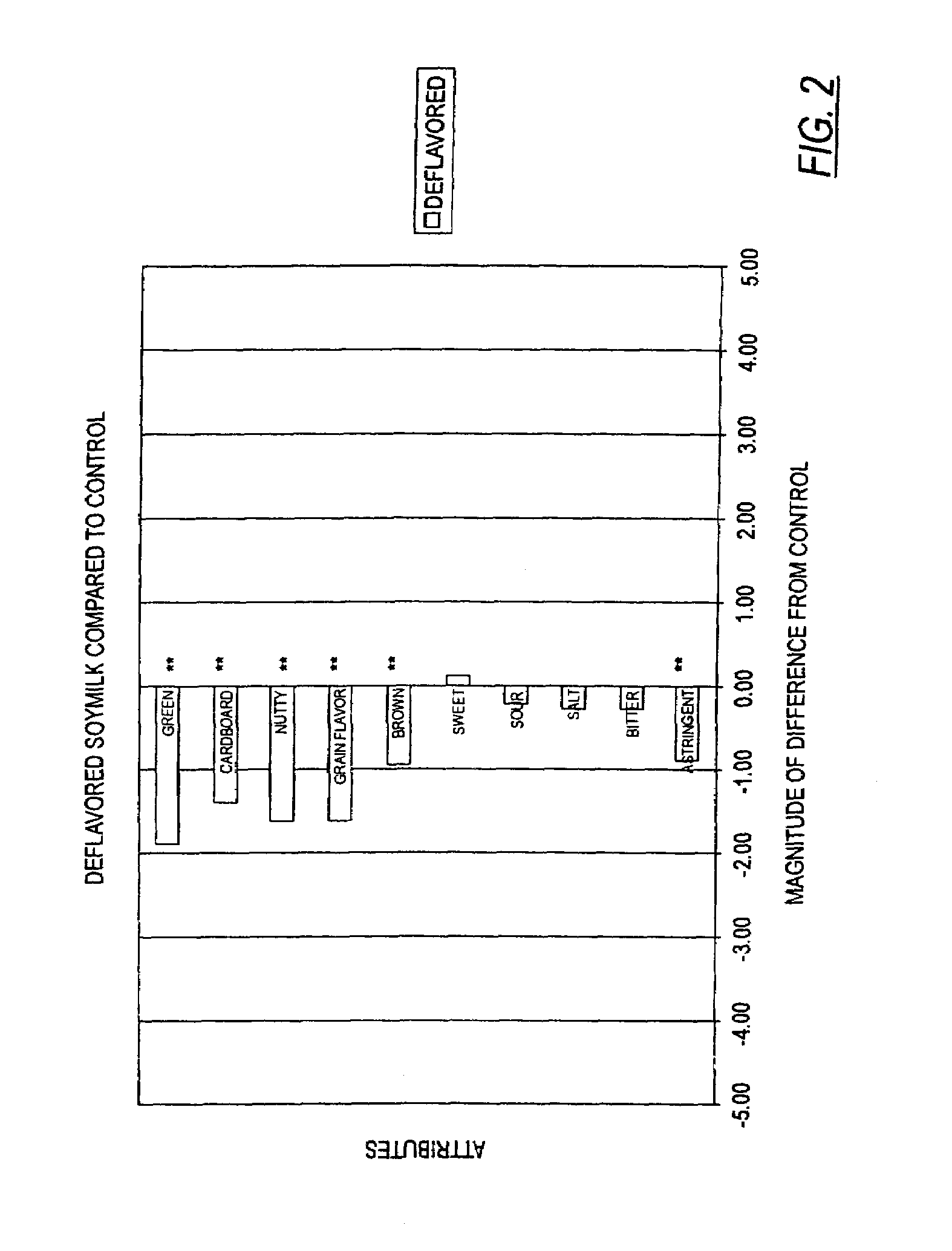Method of deflavoring soy-derived materials for use in beverages
a soy-derived material and beverage technology, applied in the field of soy-derived material processing, can solve the problems of patents that do not teach or suggest control of the ph, prevent their ready acceptance by consumers, and lose valuable proteins
- Summary
- Abstract
- Description
- Claims
- Application Information
AI Technical Summary
Benefits of technology
Problems solved by technology
Method used
Image
Examples
example 1
[0070]Soy protein isolate (Protein Technology International (PTI); St. Louis, Mo.) was hydrated in tap water to provide a concentration of 10 percent. The aqueous composition was mixed with a magnetic stirrer until all of the soy protein isolate was completely dispersed. The pH of the mixture was adjusted to 11.0 using sodium hydroxide. Then, the pH-adjusted composition was placed in a dialysis tube (Spectrum, Inc.) having a 3500 molecular weight pore size and tap water was passed over the outside of the tube continuously for about 4 hours; the pH remained greater than about 9 during dialysis. The composition remaining in the dialysis tube was poured into a glass beaker, neutralized, and evaluated for aroma and taste. A comparison was made with the dialyzed composition and a sample treated in a similar manner, but which had a pH of 6.7 and a second sample which had been neither dialyzed nor pH-adjusted. Blind evaluation by several individuals showed that only the pH-adjusted and dia...
example 2
[0071]A similar test was carried out using soy milk (Devansoy Farms, Carrol, Iowa) made into a 10 percent aqueous composition and then pH-adjusted and dialyzed overnight as in Example 1. After the treatment, the pH of the sample was 8.8 and the aroma and taste were significantly improved.
example 3
[0072]Example 2 was repeated with soy milk freshly prepared by soaking and blanching the beans and then grinding and separating the soy milk from the meal. After pH adjustment and dialysis as previously described, it was found that the taste and aroma of the soy milk was significantly improved.
PUM
| Property | Measurement | Unit |
|---|---|---|
| molecular weight | aaaaa | aaaaa |
| temperature | aaaaa | aaaaa |
| temperature | aaaaa | aaaaa |
Abstract
Description
Claims
Application Information
 Login to View More
Login to View More - R&D
- Intellectual Property
- Life Sciences
- Materials
- Tech Scout
- Unparalleled Data Quality
- Higher Quality Content
- 60% Fewer Hallucinations
Browse by: Latest US Patents, China's latest patents, Technical Efficacy Thesaurus, Application Domain, Technology Topic, Popular Technical Reports.
© 2025 PatSnap. All rights reserved.Legal|Privacy policy|Modern Slavery Act Transparency Statement|Sitemap|About US| Contact US: help@patsnap.com



